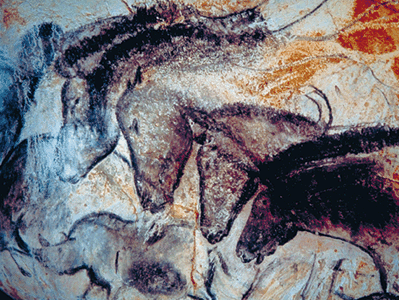June 12-25, 2014, Current Events Lesson Plan
Current Event: New Sites Added to Heritage List
The World Heritage List recently added 30 new important sites. Among them are Grotte Chauvet in France, the Okavango Delta in Botswana, and Qhapac Nan in South America. Grotte Chauvet holds the earliest known and best preserved figurative drawings in the world. The Okavango Delta is home to some of the world’s most endangered species of large mammals, including cheetahs, white rhinoceroses, black rhinoceroses, African wild dogs, and lions. Qhapac Nan was a 1,865-mile (3,000-kilometer) network of roads in the Inca’s Andes Mountain empire. The United States gained its 22nd site, the monumental earthenworks of Poverty Point, Louisiana. The complex was created and used for residential and ceremonial purposes by a society of hunter-gatherers from 3,700 to 3,100 B.C.

Chauvet Cave in southern France was added to the World Heritage List because of its spectacular examples of art by prehistoric people. (Center for Information & Documentation (DRAC Rhone-Alpes))
Objective:
The World Heritage List is an international registry of sites with cultural and natural significance. Sites are listed because of either their unusual scenery and wildlife or because of their importance as part of our cultural heritage. The list, established in 1972, is maintained by the United Nations Educational, Scientific, and Cultural Organization’s (UNESCO) World Heritage Committee. The aim of the committee is to preserve our cultural and natural heritage for future generations. The list includes monuments, buildings, and natural sites. Sites are included if they are judged outstanding from a historic, artistic, or scientific viewpoint. The list includes such famous sites as the Acropolis in Greece, Chichén Itzá in Mexico, the Great Barrier Reef in Australia, Serengeti National Park in Tanzania, Stonehenge in the United Kingdom, and the Taj Mahal in India. The Behind the Headlines news story and related World Book articles explore the World Heritage List and many World Heritage sites.
Words to know:
• Acropolis
• Chauvet Cave
• Chichén Itzá
• Great Barrier Reef
• Inca
• Mound builders
• Okavango
• Stonehenge
• Taj Mahal
• UNESCO
• United Nations (UN)
• World Heritage List
Discussion Topics:
1. The Inca ruled one of the largest and richest empires in Latin America. Ask your students if they can name other important Indian cultures in Latin America. (They might say Aztec, Maya, Toltec.) Ask your students if they can name other ancient civilizations. (They might say Babylon, Egypt, Greece, Persia, Rome.)
2. Ask your students which historical, cultural, and natural sites they believe are the most important in the country in which they live.
3. Have your students debate the topic, “Historical places should be preserved at the expense of modern development.”
4. Have your students debate the topic, “In developing countries, economic development is more important than preserving historical, cultural, and natural sites.”
5. UNESCO is an agency of the United Nations. Ask your students to use World Book’s Timelines feature to view or add to the History of the United Nations timeline. (Students may wish to also use in World Book’s United Nations article for help.)


